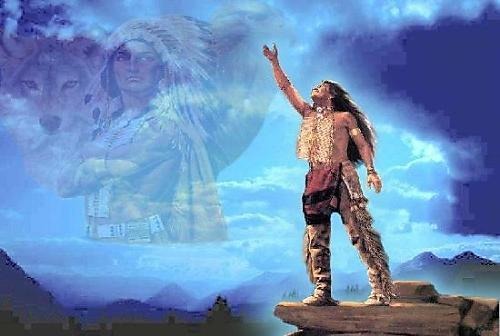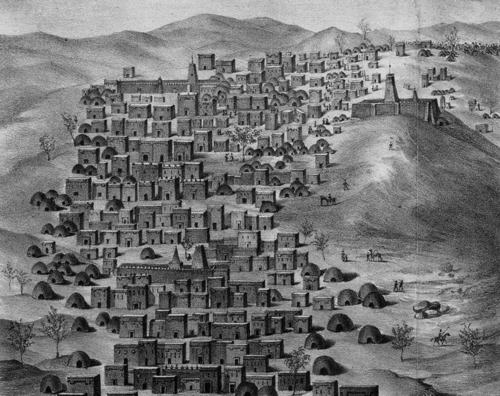7th Grade, Chapter 3 "Transition in Sub-Saharan Africa"
4.6(9)
4.6(9)
Card Sorting
1/19
Study Analytics
Name | Mastery | Learn | Test | Matching | Spaced |
|---|
No study sessions yet.
20 Terms
1
New cards
Sahara
The largest hot desert in the world, and the third largest desert in the world after Antarctica and the Arctic. Its area of 3,600,000 sq miles is comparable to the area of the United States. The desert comprises much of North Africa.
This name is derived from the Arabic language word for desert.
This name is derived from the Arabic language word for desert.

2
New cards
savannah
A mixed woodland and grassland ecosystem characterized by the trees being sufficiently widely spaced so that the canopy does not close. The open canopy allows sufficient light to reach the ground to support an unbroken green layer consisting primarily of grasses. The majority of rainfall is confined to one season. Frequently in a transitional zone between forest and desert or grassland.

3
New cards
Sahel
The zone of transition in Africa between the Sahara to the north and the Sudanian Savanna (historically known as the Sudan region) to the south. Having a semi-arid climate, it stretches across the south-central latitudes of Northern Africa between the Atlantic Ocean and the Red Sea. This Arabic word literally means "shore, coast".

4
New cards
clan
The largest family group in Africa. Included everyone who could trace his ancestry to a common relative. This family unit gave the individual his history and culture. Controlled by an elder (or chief) who ruled over the individual families. This family unit often owned and controlled the land used by the members. On important occasions the whole unit met together to celebrate.

5
New cards
tribe
In African society, two or more clans that shared the same language, beliefs, and customs. Some were small, while others had thousands of members. These formed the basis for later African states and kingdoms.

6
New cards
Kikuyu
The largest ethnic group in Kenya. This term literally means a huge sycamore tree and thus refers to the children of the huge sycamore. According to the 2009 Kenya Population & Housing Census, this group makes up about 16.9% of the total population in Kenya. This clan does not worship many gods, but believes in one god: Ngai.

7
New cards
animism
The belief that spirits live in both natural objects (trees, rivers, mountains, etc.) and natural forces (rain, wind, floods, etc.). By praying and sacrificing to these spirits, the Africans hoped to receive blessings. They treated the spirits of ancestors the same as these other spirits. They believed that all spirits had power to affect a person's life. (This belief was also held by many Native Americans.)

8
New cards
Ethiopia
This land was originally named Aksum until the Greeks renamed it. Its rulers claim to be descended from King Solomon and the Queen of Sheba. Converted to Coptic Christianity in the mid-fourth century AD, and resisted the Muslim invasion in the 1200s. Today it is a sovereign state located in the Horn of Africa. With nearly 100 million inhabitants, it is the most populous landlocked country in the world, as well as the second-most populous nation on the African continent after Nigeria. It occupies a total area of 420,000 sq miles.

9
New cards
Frumentius
The first Bishop of Aksum, he is credited with bringing Christianity to the Aksumite Kingdom. He was a Greek born in Tyre. Captured with his brother as a boy, they became slaves to the King of Aksum. The king freed them before his death, and they were invited to educate his young heir. They also began to teach Christianity. Later this man traveled to Alexandria, Egypt, where he appealed to have a bishop appointed and missionary priests sent to Aksum. He was appointed bishop and established the Church in Ethiopia, converting many.

10
New cards
Lalibela
A town in northern Ethiopia famous for monolithic rock-cut churches. One of Ethiopia's holiest cities, second only to Aksum, and a center of pilgrimage. The population of this city is almost completely Ethiopian Orthodox Christian. The layout and names of the major buildings in this city are widely accepted, especially by local clergy, to be a symbolic representation of Jerusalem. This has led some experts to date the current church forms to the years following the capture of Jerusalem in AD 1187 by Muslim leader, Saladin.

11
New cards
Ghana
One of the largest and most important empires of western Africa. Began developing around AD 500, starting as a small city-state headed by a clan or tribal chief. Gold production here became so prominent that the period between AD 500 and AD 1500 is called the Golden Age. This empire was followed by the Mali and Songhai empires.

12
New cards
Mali
One of the largest and most important empires of western Africa. Began developing around AD 500, starting as a small city-state headed by a clan or tribal chief. Gold production here became so prominent that the period between AD 500 and AD 1500 is called the Golden Age. This empire came after the Ghana empire and was followed by the Songhai empire.

13
New cards
Songhai
One of the largest and most important empires of western Africa. Began developing around AD 500, starting as a small city-state headed by a clan or tribal chief. Gold production here became so prominent that the period between AD 500 and AD 1500 is called the Golden Age. This empire followed the Ghana and Mali empires.

14
New cards
Musa
The tenth Mansa, which translates as "sultan" (king) or "emperor", of the wealthy West African Mali Empire. At the time of his rise to the throne, the Malian Empire consisted of territory formerly belonging to the Ghana Empire. It is said that he conquered 24 cities, each with surrounding districts containing villages and estates, during his reign. This Mali king is perhaps most famous for his pilgrimage to Mecca in AD 1324, where he displayed his wealth and gave away so much gold that he reduced the value in the region for several years.

15
New cards
Timbuktu
A historical and still-inhabited city in the West African nation of Mali, situated north of the River Niger on the southern edge of the Sahara Desert. Starting out as a seasonal settlement, it became a permanent settlement early in the 12th century. After a shift in trading routes, this city flourished from the trade in salt, gold, ivory and slaves. It became part of the Mali Empire early in the 14th century. The expanding Songhai Empire absorbed the city in 1468. A Moroccan army defeated the Songhai in 1591, and made Timbuktu their capital. The golden age of the city, during which it was a major learning and cultural center of the Mali empire, was over and it entered a long period of decline.

16
New cards
camel
An even-toed hoofed mammal bearing distinctive fatty deposits known as "humps" on its back. The three surviving species are the dromedary, or one-humped, which inhabits the Middle East and the Horn of Africa; the Bactrian, or two-humped, which inhabits Central Asia; and the critically endagered wild Bactrian that has limited populations in remote areas of northwest China and Mongolia. Both the dromedary and the Bactrian camels have been domesticated; they provide milk, meat, hair for textiles or goods such as felted pouches, and are working animals with tasks ranging from human transport to bearing loads.

17
New cards
Gold Coast
Following the decline of the Mali and Songhai, some of the West Africans (known as Akan) thrived through a combination of farming and mining for gold. These Akan exchanged gold for products from distant lands through the Portuguese traders at coastal settlements. The Europeans were amazed at how much gold the Akan had available for trade.

18
New cards
Swahili
A trade language built upon the Bantu language. This language has served as the native tongue of various groups living along the southeast African coastline. In this language, about thirty-five percent of words are Arabic in origin, but it also includes words from many other languages (like English). This common language enabled many tribes and nationalities to carry on trade.

19
New cards
Zimbabwe
In the mid 1200s Mapungabwe was abandoned, and this city was established on a plateau near the Sabi River. This city grew to a population of 15,000 to 20,000 citizens in the 1300s and thrived on raising cattle and exporting gold, slaves, and ivory to the coast. Trade from India and China also passed through this empire. For reasons unknown, this empire fell into rapid decline and by the 1450s was abandoned.

20
New cards
Kilwa
This was a key port through which Zimbabwe's gold was transported north. (The empire of Zimbabwe lay about two hundred miles from the East African coast. Therefore, it relied on coastal cities to receive and transport trade.) Besides gold, this port exported spices, tortoise shells, coconut oil, ivory, and aromatic gums, and slaves. For approximately 500 years, Kilwa was minting coins. This lasted from about A.D 1100-1600 and the coins have been found across the region, including Great Zimbabwe.
